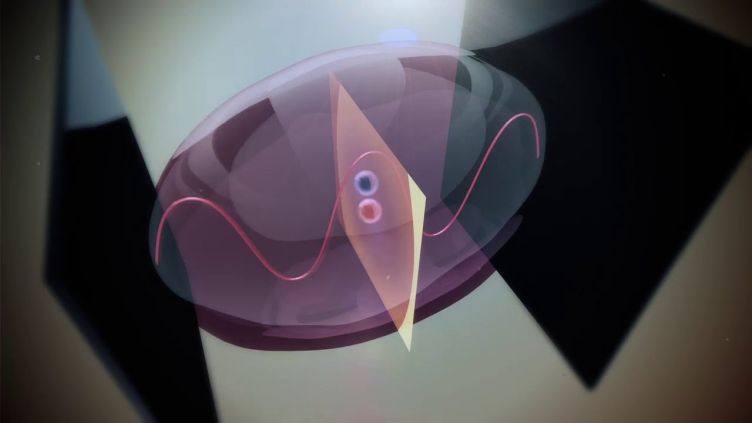Quantum animations
Researchers in our Low Dimensional Structures and Devices research group have made a series of animations that explain some of the scientific problems they're working on. Topics range from quantum computing to 2D materials.
Topological quantum error correction
How can we protect the fragile quantum states to make real-world quantum computing and applications? This video explains why qubits made of single particles are so sensitive and how, in principle, to go around this problem to make robust qubits.
2D materials beyond graphene
Following the discovery of graphene a host of other 2D materials have been discovered. This film explains the concept and unique properties of 2D materials and shows that these properties can be combined to produce artificial materials with tailor-made functions.
Quantum computing with light
This animation explains what a quantum bit, or qubit, is and why a quantum computer can be better than a classical computer. It describes our researchers' vision of how to build a quantum computing circuit using light on a chip – a topic the team explored at the Royal Society Summer Science Exhibition.
Semiconductor exciton polaritons
The basic underlying physics of exciton-polariton formation in a semiconductor microcavity is explained in this short animation. A number of fascinating fundamental effects can be observed in these systems, such as stimulated parametric scattering, non-equilibrium Bose-Einstein condensation and superfluidity
Hong-Ou-Mandel effect
This animation describing the Hong-Ou-Mandel effect in photonic structures – a key component of photonic quantum information processing.
Researchers in Sheffield are developing miniaturised semiconductor structures like the one shown in the film to demonstrate the Hong-Ou-Mandel effect. The overall goal is to interface static qubits (exciton or spin states in quantum dots) with flying qubits (photons), in order to demonstrate the key components of quantum networks.





